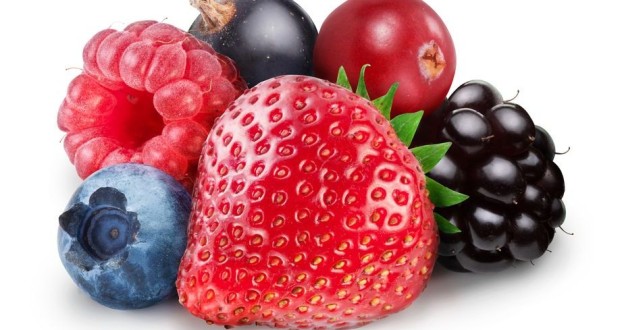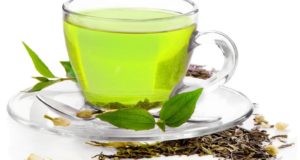Many studies have indicated that fruit consumption may help reduce our chance of heart disease and/or several cancers. However, since many fruits are not readily available, many people in the Northern latitudes do not eat as much fruit as they should. Did you know one of the best fruit choices is grown in cold weather climates? Yes, many berries are indigenous to our Northern states and provinces.
There has recently been more research on diets high in fruits benefiting from lower rates of ‘age-related diseases’ such as Alzheimer’s Disease. In fact, The Journal of Nutrition just published interesting findings. Their findings indicate that older adults who consume a diet containing at least 2.5 servings of fruit…were 40% less likely to develop Alzheimer’s Disease. The research further suggested that foods high in antioxidants (e.g., blueberries, strawberries, walnuts, and Concord grape juice) may help decrease our vulnerability to oxidative stress, something that naturally increases as we age. This ability to continue to ‘fight off’ oxidative stress results in improvements in behavior.4 In addition to the high ORAC values and fiber that berries provide you, they also contain micronutrients such as vitamin C and folic acid which are essential for our good health. Studies indicate that berries are also rich in phytochemicals such as anthocyanins, which have a range of potential anti-cancer and heart disease properties including antioxidant and antiinflammatory effects.
To reap these benefits, it’s important to consume most berries when they are fresh, rather than in jams, etc. Since most berries have a short shelf life, they are more often preserved so they can be enjoyed long after their prime. It is important to know how the processing and storage methods impact the micronutrients and phytochemicals.
- Vitamin C of most berries may decline by more than 50% during storage, depending on duration and temperature.
- Concentrations of anthocyanins and ellagic acid remain relatively unchanged and ellagitannin levels post-harvest.
Blackberries – The Dark Horse of Brambles
As you may recall, blackberries are a valuable source of anti-oxidants and rank high on the ORAC values chart. Blackberries are often confused with black raspberries but they are a different species of Bramble all together.
Brambles are members of the Rosacea or rose family; offering lovely blooms and fruit, if the birds and other wildlife don’t get to them first. Blackberries (and raspberries) are close cousins to strawberries, with hundreds of variations throughout the world. Unlike other fruit, blackberries have not experienced the commercialization that you may see in other fruits. You may find blackberries growing naturally in Asia, Europe, North and South America, and southeastern Australia. Blackberries have been especially popular in Europe, having been eaten and used for medicinal purposes for thousands of years. The prickly bushes make a natural deterrent for unwanted guests as well.
Blackberries benefits include:
- Rich in vitamin C – vitamin C plays many important roles in our body: immune system support, even helps cuts and bruises heal more quickly; free radical protection; and, collagen production, the foundation of healthy muscles and bones.
- Rich in manganese – manganese helps increase our energy levels; ensures proper food digestion; and normal bone structure.
- Rich in Phytoestrogens – it is believed that the naturally occurring estrogen found in plants may help alleviate PMS symptoms including bloating and food cravings. They may also provide relief for menopausal symptoms such as hot flashes. Phytoestrogens may also contribute to brain and immune functioning and heart health.
Blueberries – The Blue Ribbon Berry
Like the Acaí berry, blueberries are in the news regularly and rank high on the ORAC value chart. Unlike Acaí berries, they are indigenous to North America and stay fresh longer. Whether you are walking through the woods or hiking a mountain in the US A or Canada, you are bound to come across one of 30 different species of blueberries during your travels. Wild blueberries are very rare in Europe, though, and recently established in Australian soil.
Although blueberries were prevalent even before the Mayflower arrived, only American Indians ate them regularly. Colonists seemed to begin eating them more regularly in the mid-1800s when they were able to acquire sugar to sweeten the blueberries before consuming them. Today, along with superior nutritional benefits, one of the blueberry’s greatest attributes is convenience. All they need is a quick rinse under cool water, no peeling, hulling or pitting is necessary to consume them.
If you are a blueberry lover, you may have noticed that wild blueberries are smaller than cultivated blueberries. Since blueberries were not cultivated until the early 1900s, the botanists that the US DA assigned for research and development sought out the best qualities of the many different species of blueberries and created a hybrid that would withstand production. This commercialization gives us fresh blueberries much longer throughout the year. Since there’s a great deal more research at American Institutes regarding blueberry versus Acaí berry benefits, many researchers and natural health experts feel blueberries are the best fruit choice, especially for fresh fruit consumption. In addition to the blueberry’s high antioxidant benefits, many studies show blueberries are rich in: vitamin C, B complex, vitamin E, Vitamin A, copper, selenium, zinc and iron. Mother nature may have created a fruit very close to a multi-vitamin!
At a recent Experimental Biology conference, a University of Michigan Cardiology Center research team presented their results: a diet rich in blueberries reduced belly fat, lowered cholesterol levels while improving glucose control and insulin sensitivity, lowering the risk of subsequent heart disease and diabetes.
Researchers at the Human Nutrition Research Center on Aging have conducted a series of studies on blueberry’s effect on Chronic Heart Failure (CHF). Using a controlled study on experimental rats, there was a strong correlation of significant health benefits with consistent consumption of blueberries. The researchers temporarily blocked the artery that provides blood supply to rats’ heart muscle. These animals then received 8 weeks of a control diet or a diet supplemented with 2% blueberry extract. The results indicated that the blueberry supplemented group showed reduced damage (cell death and inflammation) to the heart muscle and reduced mortality as compared to the unsupplemented group. Their initial findings proved promising and have warranted ongoing studies. Most recently, their ongoing research studies yielded even higher results. The team concluded, “This is the first experimental evidence that a blueberry-enriched diet has positive effects on the course of CHF and thus warrants consideration for clinical evaluation.”
Cranberries
Unlike most berries, cranberries have a long shelf life so it’s exported worldwide as both a berry and a juice. There are many that swear by daily consumption of cranberries as they are one of the best natural options for urinary tract health. In fact, since the 1920s, cranberries have been regularly studied and have been linked to improving urinary tract health as well as helping with urinary tract infections.
Raspberries
Raspberries are produced in 37 countries worldwide. Unlike its cousin, the blackberry, raspberries have more commercial harvesting, estimating nearly 200,000 acres with an average yield of about 5,000 pounds of raspberries per acre.
 Natural Knowledge 24/7 Educate yourself with nutrition, health and fitness knowledge.
Natural Knowledge 24/7 Educate yourself with nutrition, health and fitness knowledge.






